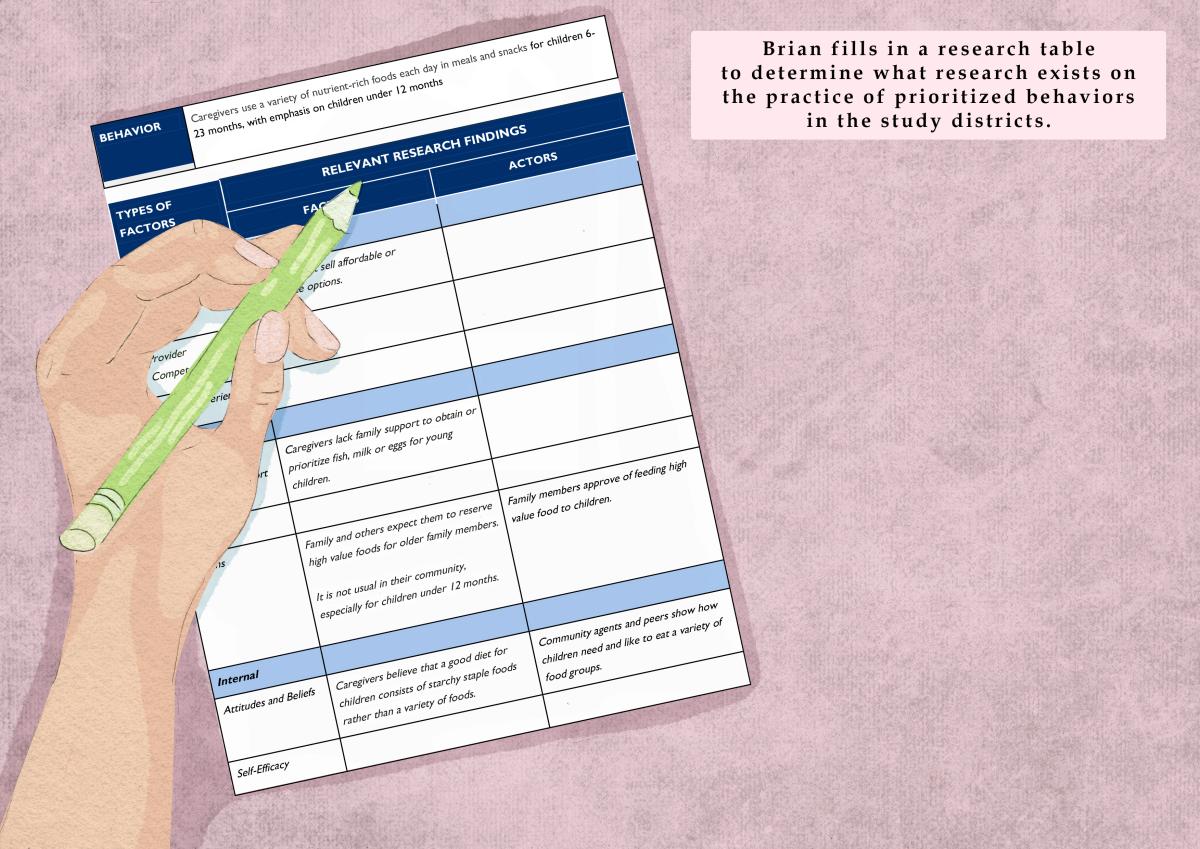After reviewing existing data, decide if formative research is needed to understand what people are willing and able to do in their context, who they need to support them in these actions, and how, using local solutions.
Use worksheet 2.1 and worksheet 2.2 to work through the steps below.
2.1 Review existing literature on priority behaviors.
Determine whether research is needed based on what is already known about each priority behavior and the factors (barriers or enablers) that prevent or support each priority behavior.
Factors That May Prevent or Support Complementary Feeding Behaviors
Also identify who must support the practice of this behavior and what actions must they take.
- Institutional-level influencers: policymakers, market actors, and health workers
- Community-level influencers: neighbors and leaders, both those in official positions and influencers
- Household influencers: family systems and individual members who need to support primary caregivers to feed children in a way that primary caregivers want. The specific actions that are needed and feasible depend on the social and cultural context.
2.2 Design research questions and plan formative research.
Focus the research on:
- Gaps in understanding priority behaviors
- Factors that prevent or support the priority behaviors to understand the root causes of why people practice these behaviors, what improvements they would be willing to try, and how.
2.3 Select formative research methods.
Check back for USAID Advancing Nutrition’s formative research decision tree tool coming soon!
2.4 Complete the research plan.
Pull the various pieces of this module together. Choose participants, define research gaps, determine research questions, and select methods.






